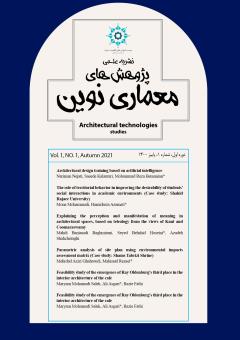Parametric analysis of site plan using environmental impacts assessment matrix (Case study: Shams Tabrizi Shrine)
Subject Areas :
Mehrdad Azizi
1
![]() ,
Mahmud Rezaii
2
,
Mahmud Rezaii
2
![]()
1 - PhD Student in Architecture, Faculty of Architecture and Urban Planning, Islamic Azad University, Central Tehran Branch, Tehran, Iran
2 - Department of Architecture, Central Tehran Branch, Islamic Azad University, Tehran, Iran
Keywords: Assessment, Environmental impacts assessment, Simulation, Site plan, Site analysis.,
Abstract :
In the architectural design process, the site is analyzed by different factors. These analyses require a complete assessment system and full knowledge. This research mainly looked to assess a parametric simulation of components affecting the site plan analysis in Khoi and the Shams Tabrizi Shrine using an environmental impacts assessment matrix. This quantitative research uses modeling and simulation techniques. To accurately assess the effects of the parameters, credible architectural software, Rhino and Grasshopper, were used. In order to analyze the site, such factors as the site bed, topography, accessibility, vision, perspective, noise pollution, and sunlight were considered. Results indicate that two factors, topography and surrounding buildings, contributed most to site calculations. According to algorithm calculations of environmental impacts assessment matrix, findings show that the cells with scores of higher than 5 were suitable areas for design and construction. Analytical components of the site can be used directly and more effectively in the design process using design algorithms and parametric methods, provided that the analysis step is an integrated method, unlike traditional methods. This research offers two takeaways. First, it provides an assessment of available plans. Second, a productive context for new plans; i.e., in addition to being a productive context for the final design, the site analysis components also serve as a vehicle to assess the final plans (both administered or unadministered ones).
